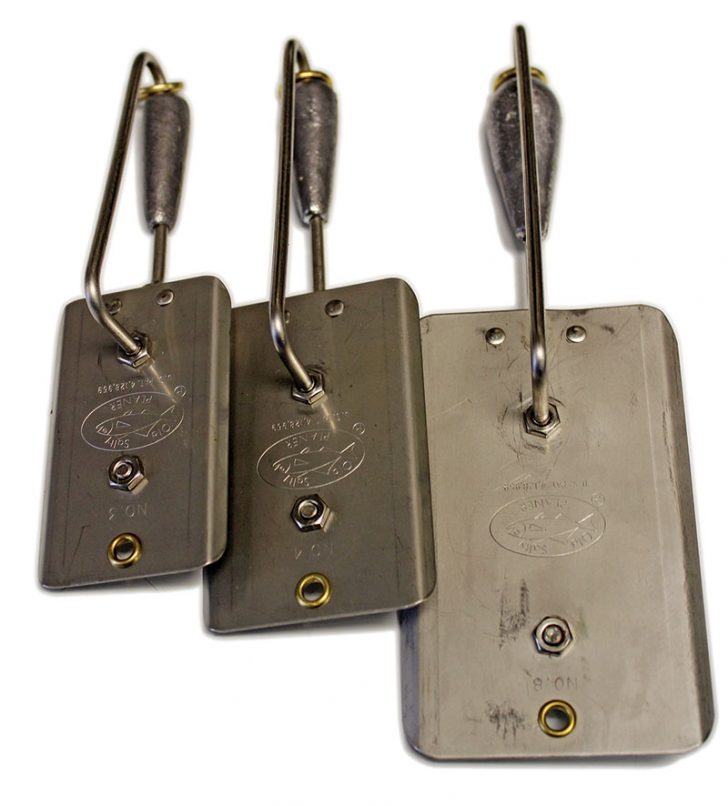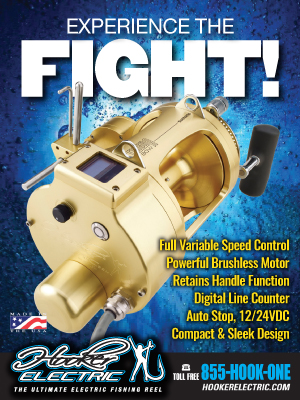
Pulling planers can put serious pressure on tackle, so your average trolling combo may not cut it. You can use anything from a 4/0 Penn Senator to a 50W or even an electric reel. The ideal rod would be a 6 to 7 foot heavy rod with a roller tip. Braided line is key in order to trip and reset your planer and since there’s no stretch, it will get the planer deeper into the water column. Star drags are ok but a lever drag system works better when using a larger planer or when trolling at a faster speed. The lever works best because you can quickly back the drag off when you first notice a strike. This increases your catch rate by lowering the chance of ripping the hook out early. This can be done with a star drag, just not as fast.
I get asked a lot about trolling speed and my answer is always to look at your baits and let them tell you what’s working. This isn’t as easy when planer fishing. My preferred speed is anywhere from 7 to 12 knots. Current, sea state and planer size will be the biggest factors. I like to fish a #4 and a #8 Old Salty. I’ll deploy my #4 first and fish it the furthest from the boat, anywhere from 150 to 300 feet back. The larger #8 planer gets fished short, just behind the prop wash. Keep in mind that the farther back planer is, the deeper in the column it will run. This also applies to speed, the faster you go the deeper it goes.
Next up are the ways to rig your planer. The first way is the older way and probably preferred method by most commercial and charter operations. This is the “fixed” or “in-line” planer method. Your mainline braid is tied to a heavy duty ball bearing snap swivel, which is attached directly to the front planer ring. From there I use 60 to 100 feet of 60 pound mono and add 6 to 9 feet of 60 pound fluorocarbon using a small ball bearing swivel. The newer way is the “bridle” planer. The use of the bridle planer allows you to remove the planer and reel everything I described that is tied to the back of the planer onto the reel. I prefer this method for my charter customers because they get to fight the fish the whole way, not just reel the planer in and watch me do the rest. This is also nice for storage since you don’t need several yo-yo spools to keep your rigs when not in use.
There are many baits you can use. Drone spoons in several colors and sizes but my favorite is a blue 3 1/2 inch drone. I recommend pulling that behind your larger planer as it will trip the #4 easily. You can also pull Bonita strips covered with any array of different skirt colors, shapes and sizes. A rigged mullet or ballyhoo with a skirt can be a wahoo killer!
Capt. Ryan Palmer
Family Jewell Fishing Charters
954-882-2631
www.fjsportfishing.com

